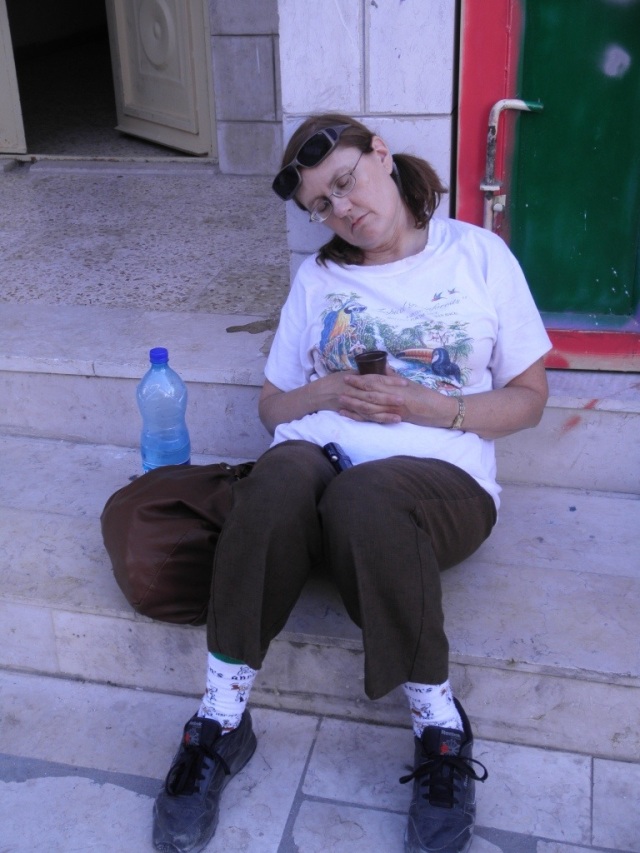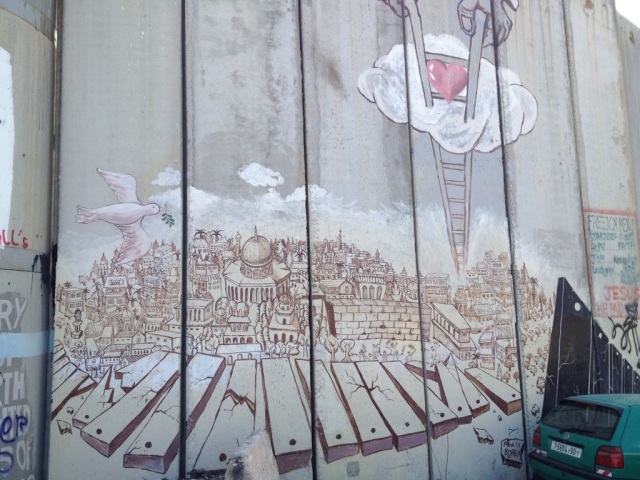Got up early this morning and ate a hearty breakfast to get fueled up for picking olives. We took the winding roads through Bethlehem and Beit Jala to the western fields of historic Bethlehem, but we had to pass under the Israeli-only road that bisects the Bethlehem district between Jerusalem and Hebron. The underpass is still open, for now, but what will happen when other farmers who live in Beit Jala or Al-Khader will have to choose between living in their homes and the simple harvesting shelter near their fields? They will be cut off from their fields or their family. We worked for three and half hours helping Ali, a Palestinian farmer with an American Passport who has family who lives in Arizona. Ali’s farm is between the internationally recognized Green Line and the Separation Wall and Israeli-only road. Ali’s young children graciously provided us with lunch in the cool breeze of the patio of their shelter.
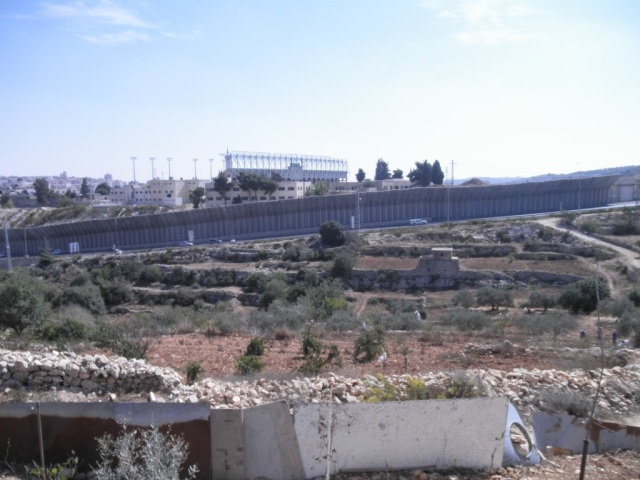
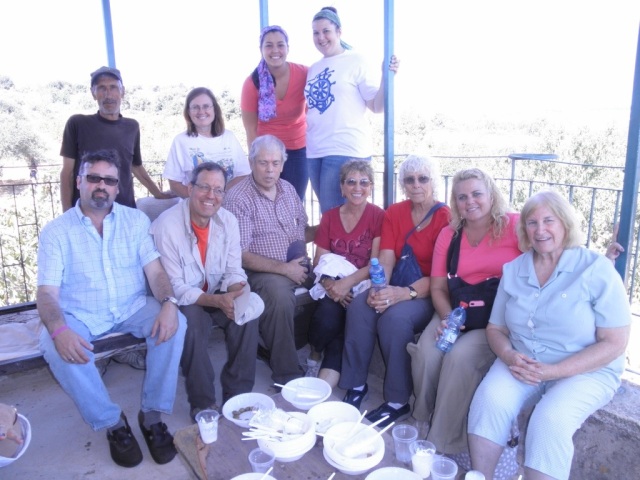
Harvesting olives is hard work, even though we place tarps down on the ground to catch the olives, sorting through them to remove leaves and finding the errant olives is tedious work. The buckets of olives means the world to the families, who rely on the oil and income of the harvest. Ali’s older children live in the States, so the help we provided was a major contribution to the family’s economic health. (The fresh figs were to die for!)
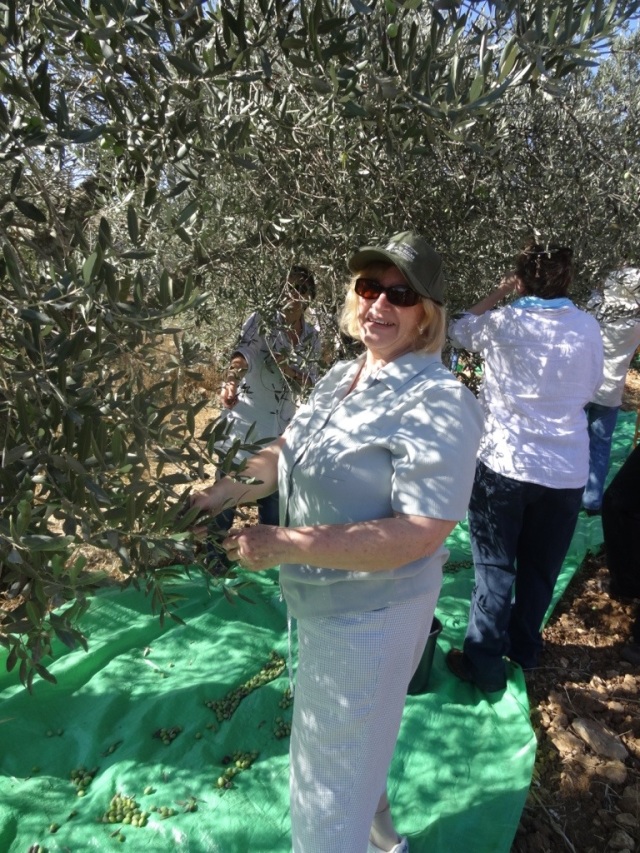
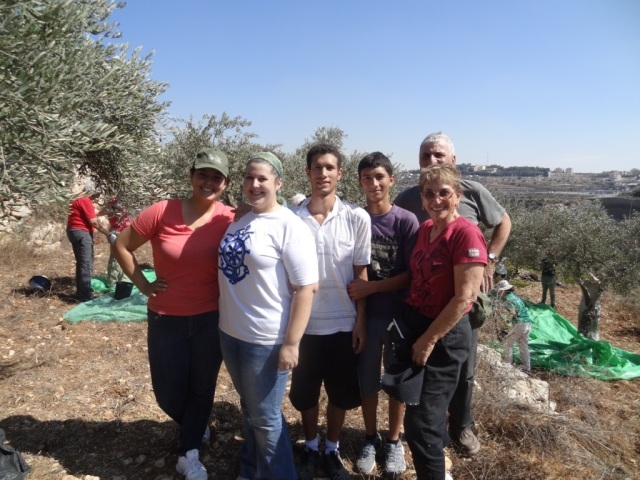
After lunch, we went on a tour of the Aida Refugee Camp just northwest of Bethlehem and Beit Jala. This camp was a place of tents for 10 years after 1948, when the residents of 42 local villages were moved there from what is now West Jerusalem, and the outlying areas around Bethlehem and Hebron that are now a part of Israel proper. Eventually, the UN made concrete shelters for the families, but they weren’t strong enough to build a second story, so most families have torn down the original one or two room shelters and built more substantial foundations and room for the extended families. While residents own the homes they have built, they live on rented land from local Christian families and so don’t own the land. Many of these families still have the keys to the homes that Israelis live in today, or that have been leveled and built over. 750,000 refugees were dispersed both internally to Israel and externally to 59 refugee camps in Lebanon, Syria, Jordan, Egypt, and the West Bank and Gaza in 1948. They wait for some kind of settlement which recognizes either their internationally recognized right of return, or compensation for the lives and connection to their homeland they have lost.
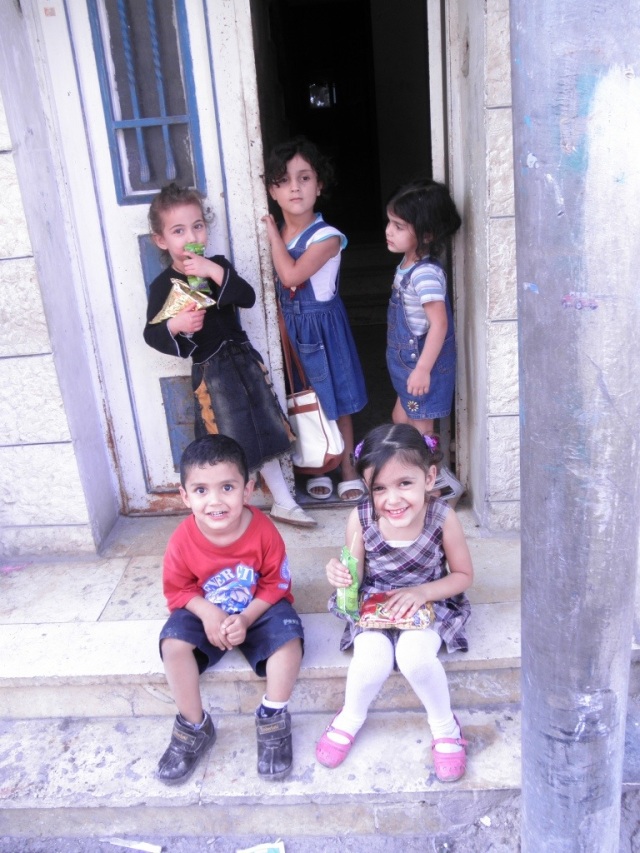
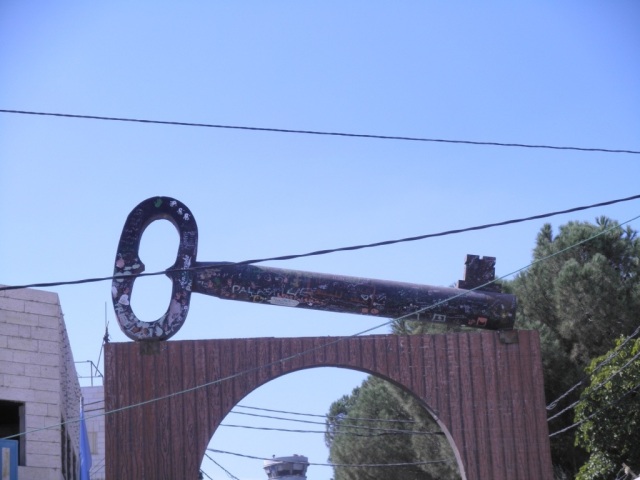
Next we walked around the 30 foot concrete wall that surrounds Rachel’s Tomb. This holy site to all Abrahamic faiths is now only accessible for those with a pass into Jerusalem, so Bethlehemites are not allowed to go to their own local shrine. The Wall inserts itself well into the Bethlehem District from the North, and at one point goes around one Palestinian home on three sides. British incognito guerrilla artist “Banksy” has painted many messages of peace and creative resistance on the wall (see http://arts.guardian.co.uk/pictures/0,,1543331,00.html). One participant noticed the multiple sniper towers on the wall, and remembered the guide pointing out bullet holes on the Mosque and the UN sponsored school in the refugee camp.
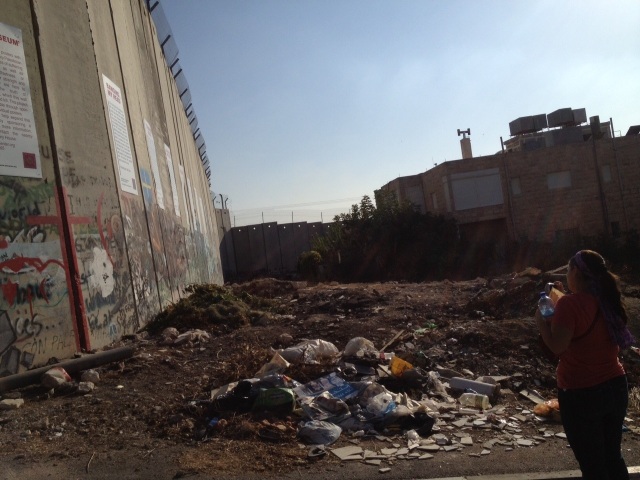

The group then loaded the bus and went to the Church of the Nativity. Upon entering, we saw the original mosaic floors a few feet below the current floor, and the restored mosaics high on the walls, while others have been covered in protective plaster until they can be restored. The line to see the grotto was so long that a group of us entered the left transept to see the art and altars there, and our plans were diverted as a woman from Virginia collapsed in line leaving the transept. Her friend was calling for help, and we saw her slumping to the floor. Dr. Spencer and Allan (the retired paramedic) from our group responded quickly and helped her before she could hit her head on the marble floor. Allan recognized it wasn’t a seizure and took her pulse, and then raised her feet. It took a while for the paramedics to arrive, but we were able to help her get stabilized and cleaned up before they arrived. We visited a few shops on Manger Square to close out the day, and had a nice ride back to our hotel.
Tonight we have dinner and a presentation on the Christian Kairos Palestine Document. But after a heavy day of service and learning, some are ready to just go to bed.